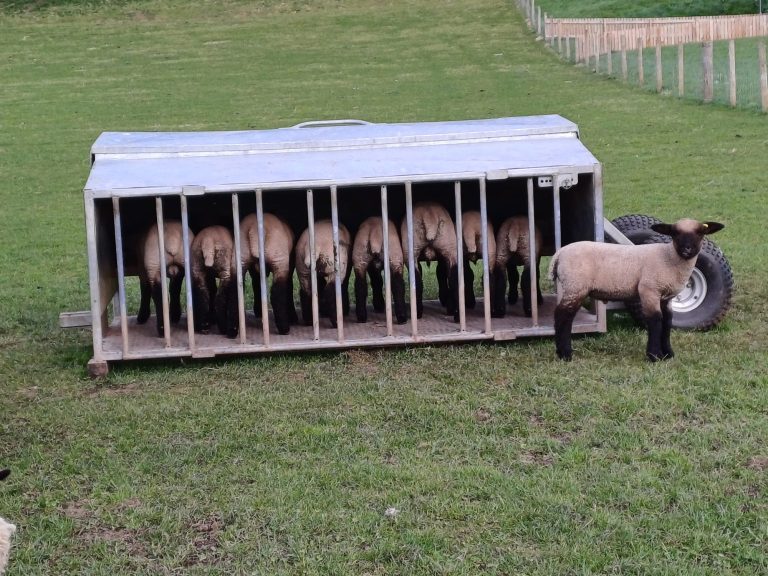“Harbro lamb creep has been key to our system since the late 1980s when we started using it. It does the job for us and I see no reason to change.” says Gilbert Bain. “We have 220 lambs on Rapid Lamb at the moment, the first draw should be away at the end of May and last lambs off at the end of July.”
Farming in his own right since 1984, Gilbert along with his wife Mary now run a flock of 320 ewes from Heldonside Farm, near Elgin in Morayshire finishing all the progeny.
“The ewe flock has changed shape over the years and lambing dates have shifted back and forth. Lambing starts about February 20th with 25 pure Hampshire ewes which naturally come into season earlier. Around 120 Scotch Mules, mainly gimmers, lamb at the beginning of March and the remainder of the Mules and some Blackface and Cheviots start about April 20th. The flock is predominantly closed, Blackfaces and Cheviots produce our replacement gimmers whilst Texel and Bluefaced Leicesters tups are bought in as required.”
February and March born lambs receive creep feed in ad lib feeders until they are ready to market. Gilbert runs lambs though the auto weigh weekly, aiming for 46kg for the live ring, with all lambs consigned to United Auctions, Huntly.
“As the ewes’ milk supply diminishes, we find it’s important to keep them slightly tight of grass which helps make the lambs eat the creep.”
“We have recently switched to creep feeders with mesh flooring which I had made to my own specification by a local fabricator. Lambs are not able to lie on the ground nor stand in mud so this has really helped any feet problems in the young lambs.”
“Stock health is a key priority for me and keeping on top of worm burden is key to helping them finish faster.”
“When buying tups, I look for good conformation and tight skin to produce lambs that’ll finish well on my system. I’m very selective when it comes to buying in Cheviot and Blackface ewes which we occasionally do and try to buy ewe lambs from dispersals or privately off farm lessening the risk of introducing disease. I’m a great believer too that sheep have better health the higher up the hill they are kept.”
“Some of our sheep are kept on ground surrounded by trees, isolating them from other stock thus acting as a great quarantine field and acts as a barrier to e.g. sheep scab.”
A small acreage of winter barley and oats is grown for feed and treated with Maxammon. This is mixed with Harbro protein concentrate and used for pre- and post-lambing feed, for finishing cull ewes and for any April-born lambs which are still on the holding in October/November.
Gilbert started farming on his own in 1984 getting a limited duration tenancy on Blackhills Estate – which was a fairly innovative idea at the time – and combined this with milking cows on another farm. Circumstances changed in 1996 when he had the opportunity to take on land from family members and so relinquished the tenancy. This gave him and his wife the opportunity to run 360 acres split 50:50 between low ground and upland, stocking 60 cows, finishing all their progeny and running 200 Texel cross ewes and finishing all the lambs. They did this until 2019 when one unit was sold and the cattle dispersed.

